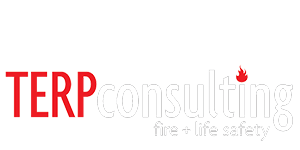How to ensure your building project follows 2022 NYC Construction Codes
Stay ahead of the game with the updated 2022 New York City Construction Codes and ensure compliance of your building projects. Stay informed of all the revisions and changes in the regulations, ensuring compliance, and avoiding costly mistakes. Whether you’re a contractor, architect, or building owner, the code consultants at TERPconsulting can guide your team with their deep understanding of the new standards and requirements the city has instituted. As a fire protection engineering and code consulting firm, the code consultants at TERPconsulting can ensure the fire and life safety of your building projects using their up-to-date knowledge of the 2022 New York City Construction Codes.
When did the 2022 NYC Construction Codes go into effect?
The 2022 New York City Construction Codes went into effect on November 7, 2022, and January 1, 2023, and encompass changes to the 2014 edition of the Construction Codes. New York City Mechanical, Fuel Gas, and Building Codes were brought up to date to be in accord with the International Code Council’s I-Codes. These construction code changes consist of enhancements to the compliance requirements for fire protection, elevator safety, accessibility, tenant protection, and building system construction and inspection.
What’s new in the 2022 NYC Construction Codes?
Section 1705 of the 2022 NYC Construction Codes is a new section. Section 1705 outlines the requirements for the special inspection of Type IV construction utilizing cross-laminated timber (CLT) or structural composite lumber elements, which have become a very popular building material over the last several years.
Have any new inspections been added to New York City Construction Codes?
Section 1705 also includes two new inspections. The first is a special inspection to verify compliance with tenant protection plans. The second is a special inspection that has been added to verify existing chimney linings and breaching. The code consultants at TERPconsulting can perform both of these inspections.
In addition to adding two new special inspections, significant building code changes have been made to exterior finish systems and materials. One significant change is that now NYC allows builders to use cross-laminated timber (CLT) within exterior walls. This change came about in an effort to use more sustainable materials, therefore, avoiding the desolation of forests.
Which NFPA codes and standards need to be met in the latest New York City Construction Codes?
Under the new code, if your team is planning to use combustible materials then testing to the industry standard of NFPA 285—Standard Fire Test Method for Evaluation of Fire Propagation Characteristics of Exterior Wall Assemblies Containing Combustible Components is required for all exterior walls that are made from combustible materials. The fire protection engineers at TERPconsulting can perform this testing standard which is applicable no matter the size of the construction project or the area where walls made from combustible materials are installed.
Another requirement of exterior walls made from combustible materials under the new code is that internal sections of non-combustible fire blocking must be installed periodically to prevent and contain flame spread. One notable provision of the new NYC Construction Code is that buildings with balconies or other publicly accessible outdoor spaces cannot use combustible materials on walls in the immediate vicinity of outdoor/accessible areas.
TERPconsulting’s code consultants can also guide project managers on the requirements surrounding NFPA 13—Standard for the Installation of Sprinkler Systems and buildings that use cross-laminated timber (CLT). Buildings in NYC must be sprinklered with the systems outlined in NFPA 13 when using CLT.
What guidance do the revised New York City Construction Codes include about using cross-laminated timber (CLT)?
The new NYC construction code also states that to retrofit the exteriors of older buildings without modern fire safety mechanisms such as a sprinkler system using combustible materials, a 3-foot horizontal band made from non-combustible material, such as brick, must be installed to separate each floor of combustible material. This safety precaution has been added so that a fire can be contained to a single floor.
Additionally, another combustible exterior wall provision outlines that new wood construction types which include mass timber, cross-laminated timber (CLT), and structural composite lumber (SCL) are prohibited from being used with exterior walls made from combustible materials. If builders do use cross-laminated timber (CLT) on exterior walls they must measure at least 6” and have a two-hour fire-resistance rating. Additionally, the exterior surface must be protected by approved means such as a noncombustible material, gypsum, etc. of which TERPconsulting’s code consultants can provide guidance.
With regard to accessibility, what has changed in the latest NYC Construction Codes?
Elevator accessibility has been changed to require Limited Use/Limited Application lifts (LULA), which is a hybrid commercial elevator and wheelchair lift, to be provided with door locking monitoring. This elevator accessibility safety requirement was put in place to minimize the risk of people and objects getting caught in the moving device.
TERPconsulting’s fire protection engineering and code consulting expertise covers all the regulations, standards, and accessibility requirements for construction in New York City, providing you with the information you need to make informed decisions and ensure safety and building quality in your projects.



